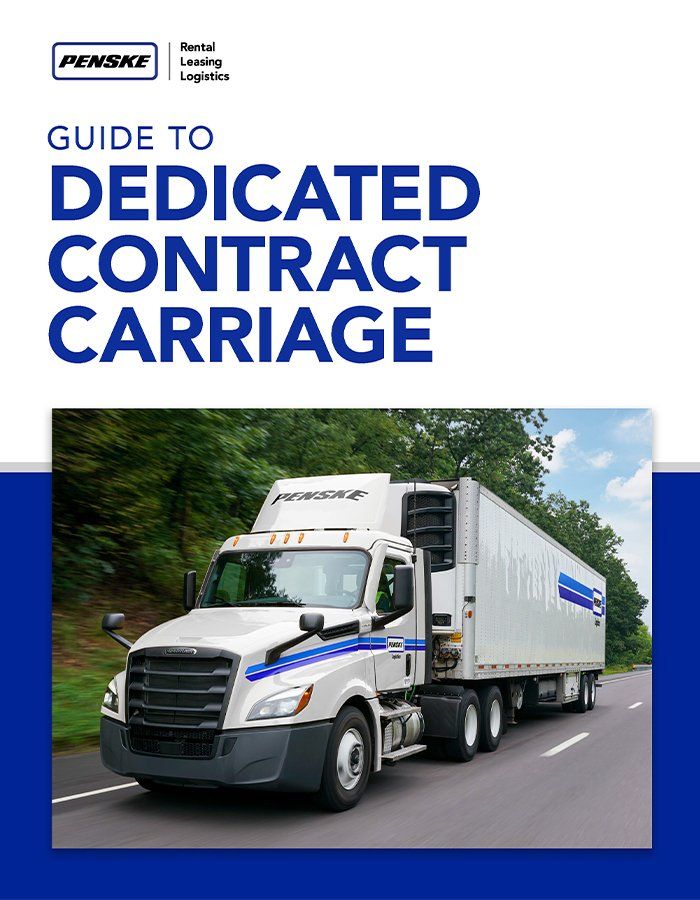Make cost-effective moves quickly and move products in the most timely means possible
Timely shipments can make all the difference for manufacturing and retail-related industries. Yet the speed of shipments must be balanced with affordability.
To deliver products in the most cost-effective and timely means possible, forward-thinking logistics companies are embracing hub-and-spoke models, where connections are arranged like a wheel. Freight traffic moves along spokes connected to a central hub. This approach efficiently moves products out of strategically located distribution centers and shortens travel time.
As an industry leader, Penske Logistics puts its own hub-and-spoke model into action for customers. Penske experts optimize the model to help you to speed up deliveries, increase efficiency, reduce costs and keep products moving.
Maximize Freight Efficiencies
As part of the hub-and-spoke model, hubs are positioned no more than 300 miles apart from one another. Here’s how it works:
Driver A leaves from his origin hub and meets Driver B at a switching point. They then exchange trailers. And while Driver B continues to the next switching point, Driver A heads back to his originating hub. This sequence of events keeps products in continuous motion and allows drivers to return home each night.
The hub-and-spoke model creates numerous benefits, including:
- Continuous movement for loads thanks to centralized handoffs.
- Reduced lengths-of-haul, which improve scheduling, reduce transit time and help drivers comply with hours-of-service regulations.
- Consistent on-time performance, which enhances service levels and ensures products arrive in the right place at the right time.
- Improved driver recruiting and retention. Drivers are able to return home each night, thus experiencing an improved quality of living. This produces additional benefits, including higher tenure, route consistency, increased transit dependability and performance, and improved safety.
- Reduced costs and enhanced productivity thanks to Penske’s economies of scale (larger loads reduce per-unit costs) and the elimination of the need for team drivers.
- Lower carbon footprint, because fewer empty miles driven reduces wasted fuel and emissions.
- Consistent pricing mitigates the risk of third-party carrier price fluctuations.
Fast and efficient delivery doesn’t have to mean high costs. By partnering with Penske and leveraging our hub-and-spoke system, you can strategically use your transportation resources and steer a course toward efficiency.
4 Common Questions About the Hub-and-Spoke Model
What is a hub-and-spoke network?
A hub-and-spoke system is a distribution network with a centralized hub connected to multiple surrounding lanes, or spokes, similar to a wheel. A company can rely on just one central hub-and-spoke system or utilize multiple hub-and-spoke systems within its network to get everything where it needs to go efficiently and safely. When utilizing hub-and-spoke systems within a network, a company may also use relay driving for efficiency and to avoid driver burnout.
What is a hub-and-spoke model example?
Hub-and-spoke models work similarly to airlines – planes take off from a central location and fly to multiple locations.
What is the hub-and-spoke method?
Hub-and-spoke is a distribution method that utilizes a centralized hub. A company’s products originate from this hub or are sent to the hub for customer distribution. From the hub, products travel outward to smaller locations for further processing or distribution.
What is the primary purpose of the hub-and-spoke system?
This system allows a company to utilize fewer trucks and fewer overall transportation routes. Instead, remaining vehicles may run multiple routes, transporting increased loads by picking up and dropping off cargo at various places or “spokes” of the wheel.
DISCLAIMER: The content provided is for general informational purposes only. Penske makes every effort to ensure the accuracy of the information presented; however, the information herein is provided without any warranty whatsoever, whether express, implied or statutory. In no event shall Penske be liable for (i) any direct, incidental, consequential, or indirect damages (including loss profits) arising out of the use of the information presented, even if Penske has been advised of the possibility of such damage, or (ii) any claim attributable to errors, omissions, or other inaccuracies in connection with the information presented.

Download our Free DCC Buyer's Guide
All fields marked with an asterisk (*) are required.
Thank you for your request.
You will soon receive a confirmation email with a link to download your DCC Buyer's Guide.
Related Articles
Resource Library
Explore articles, case studies, e-books and industry reports from our logistics experts.
Explore More